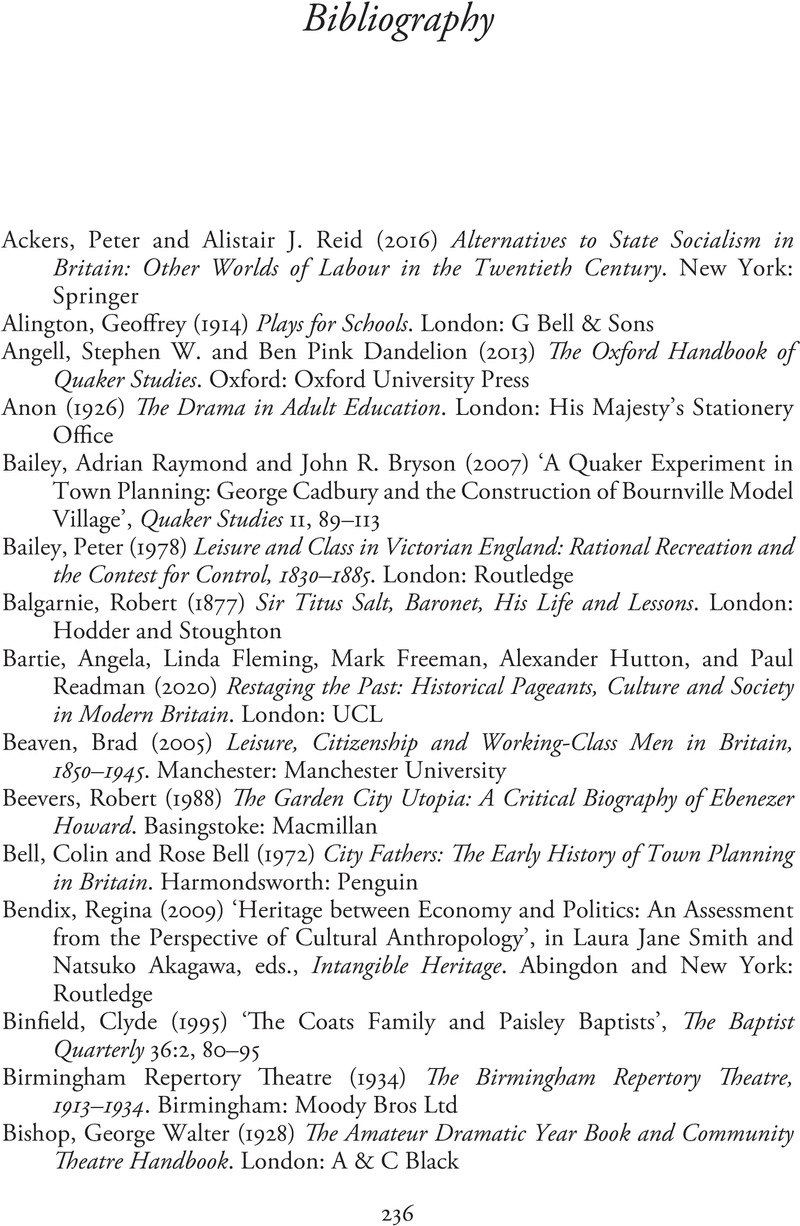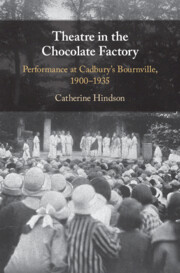Book contents
- Theatre in the Chocolate Factory
- Theatre in the Chocolate Factory
- Copyright page
- Epigraph
- Contents
- Illustrations
- Acknowledgements
- Note on the Text
- Abbreviations
- Introduction
- Part I Factory Theatre
- Part II Theatre in the Factory Garden
- Part III Theatre, Education, and Worker Wellbeing
- Conclusion
- Bibliography
- Index
- References
Bibliography
Published online by Cambridge University Press: 23 June 2023
- Theatre in the Chocolate Factory
- Theatre in the Chocolate Factory
- Copyright page
- Epigraph
- Contents
- Illustrations
- Acknowledgements
- Note on the Text
- Abbreviations
- Introduction
- Part I Factory Theatre
- Part II Theatre in the Factory Garden
- Part III Theatre, Education, and Worker Wellbeing
- Conclusion
- Bibliography
- Index
- References
Summary

- Type
- Chapter
- Information
- Theatre in the Chocolate Factory<i>Performance at Cadbury's Bournville, 1900–1935</i>, pp. 236 - 244Publisher: Cambridge University PressPrint publication year: 2023



